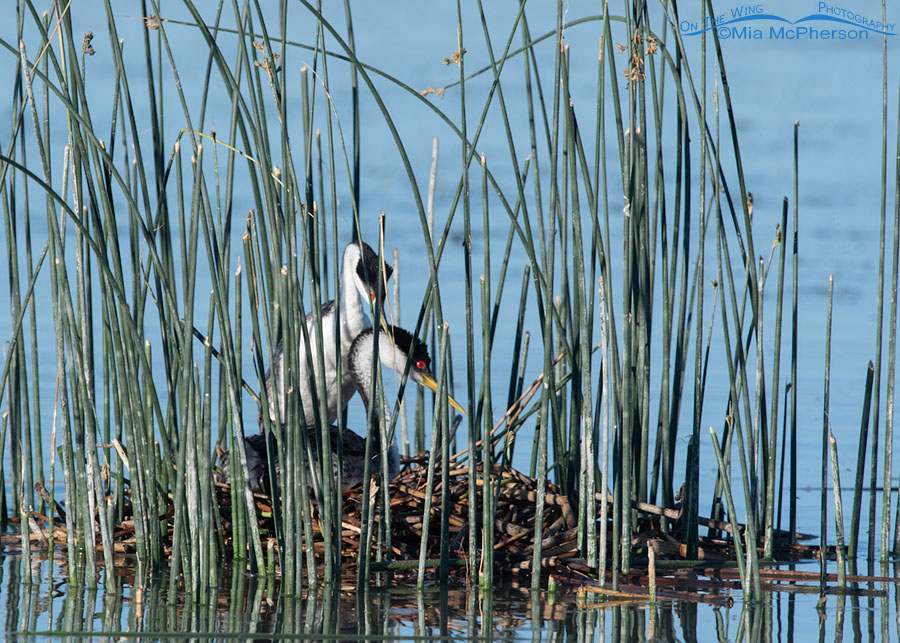 Western Grebes on nest – Nikon D500, f7.1, 1/1600, ISO 500, Nikkor 500mm VR with 1.4x TC, natural light
Western Grebes on nest – Nikon D500, f7.1, 1/1600, ISO 500, Nikkor 500mm VR with 1.4x TC, natural light
When I was at Bear River Migratory Bird Refuge three days ago I realized that in just a few weeks the Clark’s and Western Grebes will be returning to the marshes for their breeding season.
But I also remembered that due to the water level being dropped drastically and for prolonged periods of time in a few of the units closest to the auto tour route for phragmites mitigation, prescribed burns and dike maintenance for several years in a row we haven’t been seeing as many grebes at the refuge. We also haven’t seen many young grebes at the end of the nesting season.
The fact is that we haven’t been seeing many Clark’s or Western Grebes at all on the refuge during the time period that they are normally here in northern Utah.
With the water levels dropped for prolonged periods at the refuge the grebes haven’t been able to nest on the units closest to the auto tour route because they build their nests in emergent vegetation that is surrounded by water and they build their nests by using mounds of plant material. Without water to surround their nests the eggs and young grebes are subject to higher rates of predation.
The lack of water for several years, for whatever reason, has forced the grebes to find other locations to nest in other than the units we have seen them nest in during previous years at the refuge.
So, I have to wonder, will there be water in the units closest to the auto tour route this year or will the water levels be dropped again this nesting season? I also wonder if there is water in those units this year will there be enough emergent vegetation for the grebes to use to build their nests?
I plan to find out.
Mia
Click here to see more of my Clark’s Grebe photos plus facts and information about this species. Click here to see more of my Western Grebe photos plus facts and information about this species.
I want to clarify that I am not saying that phragmites mitigation is a “bad” thing, phrags are invasive and they do need to be controlled. I also fully support the highly qualified and skilled staff at the refuge.


We face a similar quandary in our local rookery, where, until two years ago, more than eight pairs of Yellow-crowned Night-Herons and four or more pairs of Green Herons nested. Then, after Hurricane Irma knocked a couple of trees into the adjacent canal, the Water Management District removed most of the trees which extended over the water. They clear-cut an entire section. Now the Phragmites have taken over that area and are encroaching along the entire shore. Last season there were only two nests, both of which failed. This season I am only seeing up to four Yellow-crowned Night-Herons, of which two appear to be approaching breeding condition, and no Green Herons. Sad! Also, we have the opposite problem– too much water which disperses prey species and has caused the Wood Storks to abandon their nests.
The Grebes are beautiful in this setting. I love how the red eyes of the Grebes highlight the image. Thanks Mia.
I hope that ‘somewhere’ the grebes survive and thrive.
These are wonderful captures!
Thank you
Just once, I found a pied-billed grebe nesting at my favorite refuge. Our problem has been the opposite of yours: so much rain that the fresh-water ponds have been nearly over-filled, and the dabblers and waders have taken areas more appealing to them. There’s a lot of water, but not much vegetation at this point; we’ll see what happens.
Thanks for posting this! We always like watching grebes, and looking to see if they are Clark’s or Western species. Looking forward to learning what’s going on with their breeding habitat.